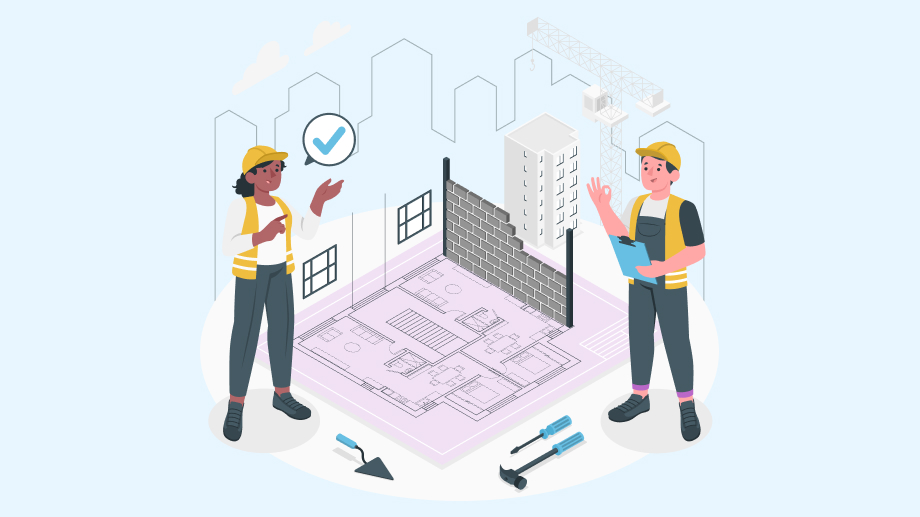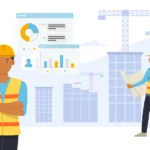Construction project delays aren’t just an inconvenience—they can mean lost revenue, strained client relationships, and costly disputes. From unexpected weather conditions and labor shortages to equipment failures and inaccurate project data, setbacks can quickly snowball into bigger problems if not addressed proactively.
Did you know? Construction delays increase project costs by an average of 20%, affecting overall profitability and client satisfaction.
The good news? Most delays are preventable with the right planning, communication, and technology. By leveraging real-time visibility into project timelines, workforce availability, and resource allocation, contractors can minimize risks and keep projects moving forward.
In this blog, we’ll explore the most common causes of construction delays and how you can mitigate them to stay on schedule, on budget, and ahead of the competition.
👉 Want to reduce costly delays? Schedule a Free Demo of our Workflow Automation Software!
Types of Construction Project Delays
Construction project delays are so common that structured classification systems have been developed to assess their impact and determine accountability.
To properly evaluate a delay, it must be classified through a series of key distinctions:
1. Critical vs. Non-Critical Delays
A critical delay directly impacts the project’s completion date or a major milestone. These delays affect the Critical Path, which outlines the longest sequence of tasks required to complete the project. Since these activities are dependent on one another, a delay in any critical task pushes the entire project timeline back.
Examples of Critical Delays:
- Failure to obtain necessary permits, delaying project initiation.
- Extended field overhead costs due to prolonged construction timelines.
- Idle labor and equipment costs caused by dependencies on delayed tasks.
A non-critical delay, on the other hand, affects specific tasks without impacting the overall project completion date.

Examples of Non-Critical Delays:
- Delays in landscaping or interior painting.
- Minor supply chain disruptions affecting non-essential materials.
- Late deliveries of fixtures that don’t affect the project’s critical path.
How to Mitigate Critical Delays:
- Use real-time project tracking to monitor schedules and identify risks early.
- Implement construction scheduling software to optimize task sequencing.
- Maintain contingency plans for high-risk critical tasks.
2. Excusable vs. Inexcusable Delays
An excusable delay occurs due to factors beyond the contractor’s control. These delays are often contractually recognized and may entitle the contractor to a time extension or financial compensation.
Examples of Excusable Delays:
- Extreme weather events (hurricanes, floods, heavy snowfall).
- Industry-wide labor strikes (not specific to the contractor).
- Delays caused by unforeseen regulatory approvals.
An inexcusable delay, on the other hand, is entirely the contractor’s responsibility. These delays often stem from poor planning, mismanagement, or failure to meet contractual obligations. Since the contractor is at fault, they are not entitled to time extensions or compensation and may face penalties or liquidated damages.
Examples of Inexcusable Delays:
- Poor scheduling and lack of contingency planning.
- Late procurement of materials, causing work stoppages.
- Failure to mobilize workers and equipment on time.
How to Avoid Inexcusable Delays:
- Improve workforce and resource planning using a job scheduling software.
- Establish clear procurement processes to avoid supply chain disruptions.
- Conduct regular project reviews to ensure schedules stay on track.

3. Compensable vs. Non-Compensable Delays
A compensable delay occurs when the project owner or a third party causes the delay. In these cases, the contractor is entitled to both a time extension and financial compensation for additional costs incurred.
Examples of Compensable Delays:
- Late design approvals from the owner.
- Owner-requested changes to project scope.
- Failure to provide site access as agreed.
A non-compensable delay is one where no party is directly at fault, meaning neither the owner nor the contractor is financially liable. While the contractor may receive a time extension, they do not receive additional compensation.
Examples of Non-Compensable Delays:
- Extreme weather conditions.
- Government-imposed restrictions or policy changes.
- Industry-wide labor strikes.
How to Protect Against Costly Delays:
- Clearly define compensable and non-compensable delays in contracts.
- Use documentation and real-time tracking to justify delay claims.
- Establish proactive communication with clients and stakeholders to prevent approval delays.
📢 Pro Tip: Avoid costly project overruns by using automated workforce scheduling to ensure labor availability. Learn More.
4. Concurrent Delays
Concurrent delay in construction projects happen when two or more delays occur at the same time. One may be caused by the contractor and the other by the project owner. These delays overlap and make it difficult to determine who is responsible.
Example of a Concurrent Delay:
- The owner fails to provide timely site access, delaying the start of construction.
- At the same time, the contractor fails to mobilize workers and materials on schedule.
Since both parties contribute to the delay, resolving concurrent delays often requires contract review and legal guidance.
How to Handle Concurrent Delays:
- Maintain detailed project records to establish responsibility.
- Use construction scheduling software to track overlapping delays.
- Seek legal advice to resolve disputes fairly.
How to Avoid Construction Project Delays
While not all delays are avoidable, many can be prevented with proper planning and risk management. Here are some proven strategies to keep your construction projects on schedule.
1. Establish a Contingency Plan
- Set aside 5-10% of the project budget for unexpected delays.
- Identify time-taking and high-risk tasks to develop response plans. You can track how much time was spent on each task using allGeo.
- Build flexibility into project schedules.
2. Automate Compliance-Related Tasks
- Use digital tools to schedule construction site inspections and audits.
- Track incidents and safety violations with cloud-based reporting.
- Store all permits and compliance documents online to ensure easy access.
3. Spot Potential Delays Early
- Unclear or changing project scope often signals a delay.
- Poor communication between stakeholders can lead to scheduling conflicts.
- Lack of real-time progress tracking results in unnoticed bottlenecks. A sure-shot way of ensuring tasks are running on time is to collect field data using mobile forms.
Conclusion
Construction project delays don’t have to derail your projects. By understanding the different types of delays and implementing proactive strategies, contractors can improve efficiency and protect their bottom line.
Key Takeaways for Reducing Construction Project Delays:
- Identify and classify delays early to determine accountability.
- Use construction technology to monitor progress and spot risks.
- Improve communication between contractors, suppliers, and stakeholders.
- Plan for contingencies with buffer time and emergency funds.
With the right tools and strategies, construction professionals can reduce costly delays. Schedule a demo with allGeo to know more.




